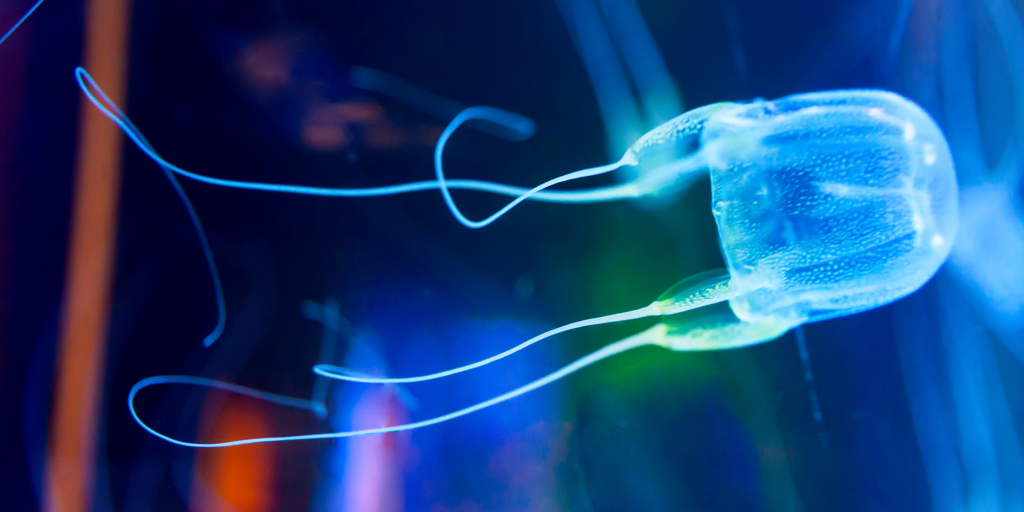Summary
Island hopping and snorkeling activities in Moalboal, Cebu, have been temporarily suspended due to the presence of box jellyfish, one of the most venomous marine creatures. The suspension follows reports of several beachgoers experiencing stings near Panagsama Beach, leading to hospitalization. Although the affected individuals are now stable, the local government and the Philippine Coast Guard have halted water activities to ensure public safety. Box jellyfish are known for their highly toxic stings, which can cause severe pain, paralysis, and even death in some cases.
Island hopping, snorkeling in Moalboal, Cebu suspended due to box jellyfish
Box jellyfish | Wikimedia Commons File
CEBU CITY, Philippines – Due to the presence of box jellyfish, island hopping and snorkeling in one of Cebu’s most famous dive sites have been suspended until further notice.
The local government of Moalboal town in southwestern Cebu announced on Tuesday, May 28 that they will not permit island hopping and snorkeling in their seas temporarily for safety purposes.
According to the Philippine Coast Guard’s Moalboal Substation, they received information from beachgoers that they found several box jellyfish floating near Panagsama beach on Tuesday morning, May 28.
At least four of them reportedly started experiencing itchiness around their body, and rushed to a nearby hospital when they noticed weird red marks appearing on their skin.
Fortunately, they are now in stable condition as of this writing.
What is a box jellyfish?
Box jellyfish, also referred to as marine stingers, are commonly found in the seawaters around Thailand, Philippines and off the coast of northern Australia. They are one of the most venomous marine creatures.
It is called box jellyfish owing to its box-shaped bell, and its sting is highly toxic, earning it the nickname ‘soft-bodied killers’.
Anyone who may come in contact with a box jellyfish’s stinger can suffer extreme pain and even paralysis, according to an entry from Britannica Encyclopedia. These symptoms often appear around three to five minutes after contact.
In some cases, it may even lead to death. It can be recalled that in 2013, a beachgoer in Santa Fe in Bantayan Island, also a popular beach destination in Cebu, died after reportedly being stung by a box jellyfish.
A study from the Medical Journal of Australia found out that around 20 to 40 people die due to jellyfish stings in the Philippines, mainly due to limited access to anti-venom and medical facilities equipped to respond to such cases.
Moalboal is a fourth-class municipality located approximately 88 kilometers southwest of Cebu City. The town is a popular tourist destination for beachgoers and diving enthusiasts.
- Box Jellyfish Characteristics: Known for their box-shaped bell, these jellyfish are among the most dangerous marine creatures. Their venom can cause severe pain, paralysis, and potentially death within minutes.
- Tourism Impact: The suspension of island hopping and snorkeling in Moalboal, a major tourist spot, underscores the importance of marine safety in tourist destinations. This could affect local businesses reliant on tourism.
- Health Precautions: Tourists are advised to be aware of the risks associated with box jellyfish and to follow local guidelines to avoid potential stings. The availability of anti-venom and medical response in the area is crucial.
- Historical Incidents: Previous cases of box jellyfish stings in the Philippines, including a fatality in 2013, highlight the seriousness of these incidents and the need for precautionary measures.
- Environmental Monitoring: The local government, alongside the Philippine Coast Guard, is closely monitoring the situation, and activities will resume once it is deemed safe for the public.
Link: The post “Island hopping, snorkeling in Moalboal, Cebu suspended due to box jellyfish” first appeared on CebuDailyNews










